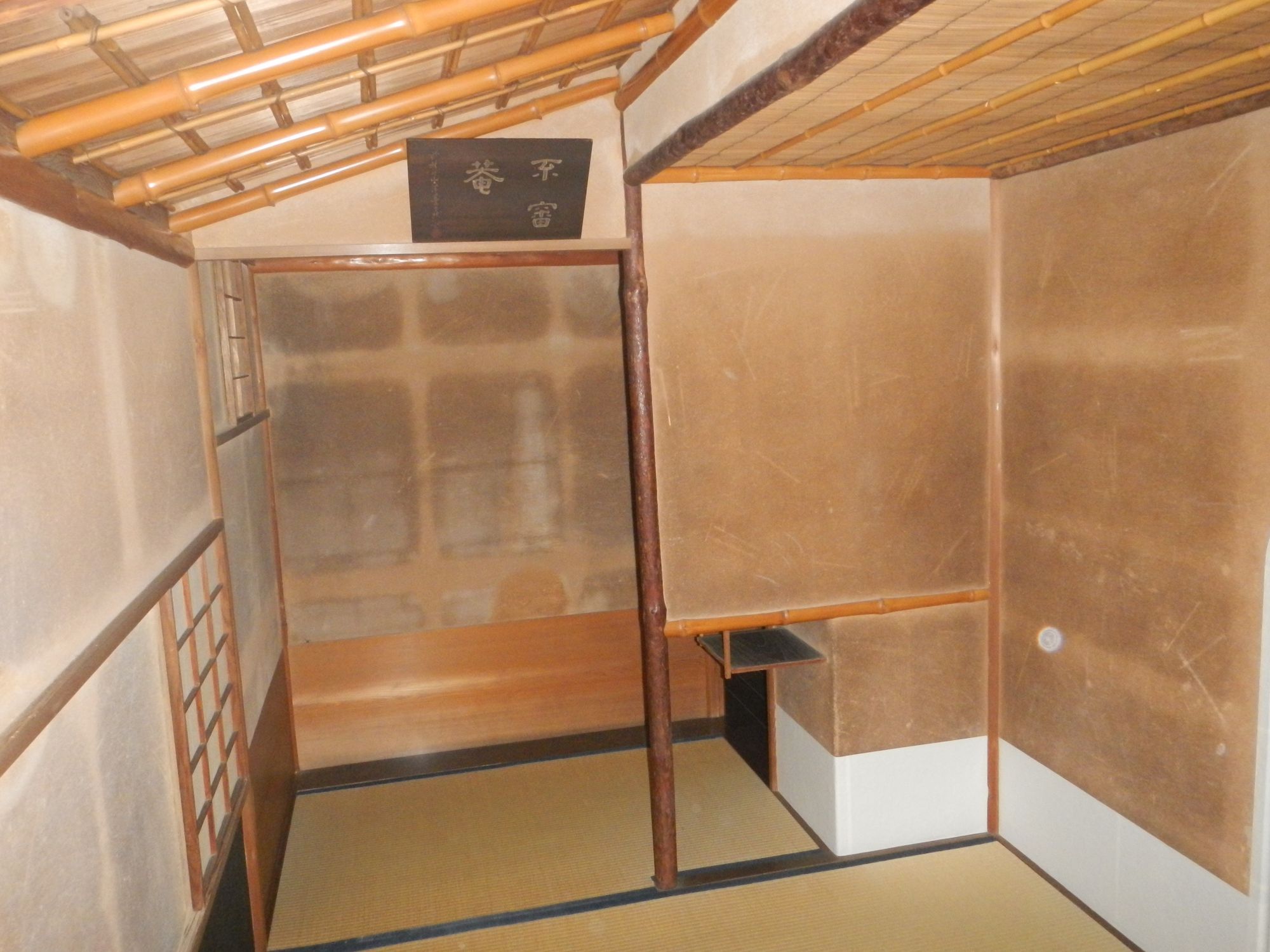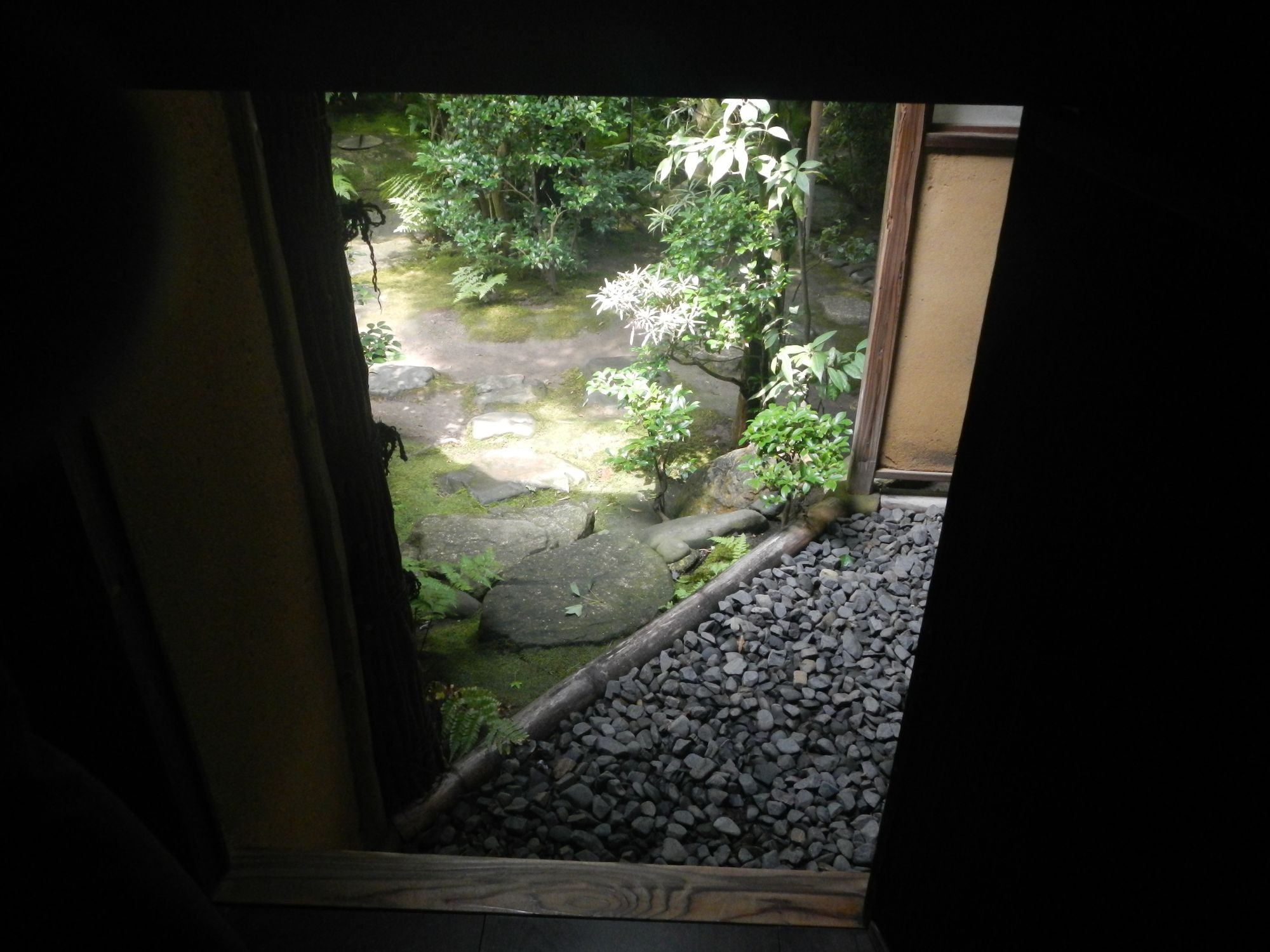Japanese Architecture

Let me be upfront. Until this experience, I never understood Japanese Architecture. It didn’t click. I liked the gardens (who doesn’t like the gardens?), but their drab stucco-esq mud brown colors of walls, and their sizing never made me feel at “home” (though I did like the proportions). Fushin’an, the 2 1/2 mat tea room built by Rikyu himself, changed that.

Fushin’an was used by Rikyu over the course of his later life, and he even served tea to Hideyoshi there before being ordered to commit ritual suicide by him. He did that, seppuku, here in this room. It has quite the air of history to it, and after studying tea for so long (6 years is a joke really…), it was much more than I ever started out to accomplish just to sit in a spot where Rikyu has sit. Though the photo does little good in communicating this spaces beauty, its wabi charm, its 3 styles of roof and mash of paper walls or its “innovative” (for a tea house) sliding windows, it changed the way I view, understand, and appreciate Japanese architecture.

It was seeing the aesthetic of their architecture in perfection that allowed me to see what all other buildings, shrines, and structures had been aiming for. This might seem an overstatement; but consider that until you have seen one of the “Grand Buildings” of a style, let it be the United States Capital Building, or Versailles, or Red Fort or the Taj Mahal, or the Doges Palace, you can’t envision what the perfection of a western home or building would look like. Imagine trying to judge the aesthetic implementation of a sky scrapper (this is what you should be doing every time you see a skyscraper) without ever having seen the Empire State Building.

Fushin’an was perfection. The buildings had no natural ends, extending themselves into the garden, and the gardens adding no contrast from the inside to the outside, just adding to the feeling of tranquility. The screens and sliding doors to control and change the sizes of the rooms; great for having large or small tea parties.
The last thing I will mention is Wabi – there is a general misunderstanding of it in the west, and even in Japan. We all know the literal meaning of it, and the general Idea behind it: cold and withered, or “to those who speak of the beauty of the full moon on a cloudless night, I wish to show them the beauty of a waning moon only partially visible though the clouds”. That’s all well and good. It is that everyone, myself included, is surprised by the use of Shin ware (formal ware), with gold leaf, and lacquer, and silver Sake pots. How can silver be wabi?
Rikyu was the father of Chanoyu; he and his patron Hideyoshi the Shogun (the one who ordered his death) were immensely rich. Chanoyu, even to this day, is primarily practiced by the wealthy; in earlier times it was only practiced by the wealthy.
Thus the use of un-guided ware, or ware lacking a patterning, or ware that took natural form over the refined and even shapes of Chinese ware, were enough to constitute Wabi. Wabi never got to the level of un-refined. Chanoyu is never unrefined. Wabi is exactly what is should be; an extension of the natural form for the aesthetic implementation of a phenomenon (let me limit this as a working definition). Chanoyu has so greatly influenced arts and architecture in japan though its ideal of Wabi, that it is now inseparable as an independent aesthetic feature of Japanese life.
It only took a visit to Fushin’an to understand that.